Natural disasters, calamities and unforeseen events make farming and farmer lives vulnerable. These events lead to severe loss, crop damage, and human and livestock fatalities, which in turn, cause grave stress to them and their livelihoods. Dr Mahesh Chander reflects here on the roles and responsibilities of Extension and Advisory Service professionals before, during, and after natural disasters, with particular emphasis on the livestock sector
CONTEXT
We often hear news stories on floods, cyclones, hurricanes, tornadoes, hailstorms, landslides, fires, droughts, tsunamis, earthquakes, volcanic eruptions, etc. All these events are characterised as disasters (Box1). According to FAO (2015), of all natural hazards, floods, droughts and tropical storms affect the agriculture sector most, showing the severe impact of climate-related disasters.Drought causes more than 80 percent of the damage in the agriculture sector, especially on livestock and crop production.Tsunamis and storms cause much damage in the fisheries subsector, while floods and cyclones are responsible for most of the economic loss with regard to forestry. Disaster risk reduction and climate change adaptation are closely intertwined, and in agriculture they should be addressed in an integrated manner (FAO 2018)
No one disaster is exactly the same as another, therefore impact and consequences vary from region to region and community to community. In developing countries, the agriculture sector attracts about 22 percent of the total damage and loss caused by natural hazards. In developing countries alone, these disasters have brought about US$ 550 billion in estimated damage and affected 2 billion people. Such disasters often undermine overall national economic growth and development goals, and agriculture sector growth and sustainable sector development in particular (FAO 2015). Alongside humans, their shelters, their livelihoods, including crops and livestock, all suffer damage and loss in varying degrees due to any of these disasters. Therefore there is critical need to prepare ourselves to deal effectively with such events in terms of reduction, preparedness, response and recovery from its harmful effects.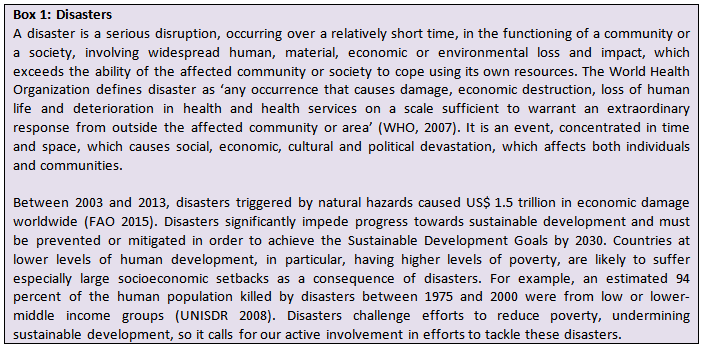
In India, during 2001 to 2015, 33,291 human deaths were reported against 12,58,353 cattle heads lost, 1,97,35,686 houses damaged, and 581.50 lakh hectares of cropped area affected (GOI 2016). Farmers, including livestock owners, suffer during disasters in multiple ways.

Ideally, EAS being responsible for serving the farming community should be the primary stakeholders in helping out farming communities during disasters. It is well known that many developing countries, including India, are not always well prepared to deal with disasters. Lack of a well-developed disaster management plan leads to considerable loss of human life, animal life and property, which could be avoided if the necessary mechanisms were in place. A lot needs to be done to improve the situation, particularly with regard to livestock. Can we as extension professionals, contribute meaningfully to better climate change and disaster management so as to minimize farmer suffering?
LIVESTOCK & DISASTERS: AN OVERVIEW
Disasters not only cause loss of life, damage to environment and properties, but have immediate and progressive impact on animals as well, resulting in animal deaths, suffering and economic losses. A large number of animals, including poultry, is affected during disasters such as drought, cyclones, earthquakes, landslides, floods, and ensuing epidemics. For instance, “in the recent floods in Kerala as many as 1.76 crore poultry, 46,000 cows and 20,000 goats were washed away. Officials of the Kerala Agriculture Department said the department was able to rescue at least 50,000 cattle and house them in relief shelters across eight districts. “These cattle had been left behind by their fleeing owners when the water levels rose. There is also widespread fear about a breakout of communicable cattle diseases. There is a huge scarcity of roughage, including straw and green fodder,” said officials (Kumar 2018). A holistic approach along with collective efforts is required to address the issues of animal disaster management more effectively. This may contribute greatly towards avoiding or minimizing animal suffering, save many animal lives and the livelihood of millions of people through protection of animals in disasters.
My personal experience
While reviewing various types of natural disasters and their impact on livestock, we outlined different preparedness, response, recovery, and mitigation strategies as well as the roles of different agencies, including veterinarians (Sen & Chander 2003). We also conducted an ex post facto study (Ganguli 2004 and Ganguli and Chander 2007) during 2002-03, using the supercyclone that struck the Indian state of Orissa in October 1999 as a case. This case study could help us understand the impact of natural disasters on livestock farmers in general, and the preparedness, response and recovery with respect to livestock management under disaster situations in particular.
The super cyclone affected the human and livestock population, causing 4.41 lakh livestock mortality against 9,885 human deaths. The preparedness, response and rehabilitation mechanisms primarily focused on human beings, but inadequate attention to livestock management in such a situation led to heavy losses. Moreover it delayed and caused poor recovery from livestock-related damages. The total loss arising from cyclone-related damage to livestock could have been reduced with better preparedness, timely response and well-designed rehabilitation efforts. The authors, based on their findings, argued a case for better attention to livestock during natural disasters, such as cyclones, since the majority of Indian small, marginal and landless livestock farmers depend heavily on livestock – and it is often the only livelihood source for them.
The welfare measures in the wake of disasters mainly concentrate on human beings with little thought given to livestock, thus causing maximum casualty in animals leading to huge economic loss for livestock farmers. For instance, cyclonic storm ‘Phailin’ which hit the coastal belt of Orissa in 2013, resulted in extensive damage not only to human life and property but it also had high impact on livestock farmers as well. These farmers faced several problems with sheltering, feeding, and treatment of animals as well as marketing of milk and other products, disposal of carcasses, restocking of animals, etc. The study undertaken on Phailin (Sunita Bara & Ganguli 2016) revealed that the preparedness, response and recovery mechanism were inadequate, resulting in poor recovery of losses for livestock farmers in the affected area. It concluded that considering the contribution of livestock to local and national economy and the dependence of poor farmers on livestock for their livelihood, the preparedness, response and recovery mechanism should be given greater attention – both by the government as well as NGOs – so as to minimize the economic, social and psychological loss to livestock farmers from natural disasters.
In 2013, I attended a two-day National Conference on Animal Disaster Management with the theme ‘Animals matter in disasters’, organized byFederation of Indian Chambers of Commerce and Industry (FICCI) in association with National Disaster Management Authority (NDMA) and World Society for the Protection of Animals (WSPA) at New Delhi, India, that highlighted the importance and relevance of animal disaster management. The conference suggested establishing ‘veterinary emergency response units’ all over the country in order to minimize the loss of livestock as well as to reduce the economic impact on livestock farmers. This conference emphasised that the preparedness culture is to be inculcated in animal disaster management through awareness, effective information sharing, appropriate education and efficient communication.
In June 2013, the North Indian state of Uttarakhand witnessed the country’s worst natural disaster since the tsunami of 2004. A multi-day cloudburst caused devastating floods and landslides leading to much sufferings and loss, including more than 5,700 people presumed dead. Among several agencies that joined in response and relief operations, the Indian Council of Agriculture Research (ICAR) too took some proactive steps in analysing the disastrous situation that affected agriculture and allied sectors. I represented the Indian Veterinary Research Institute (IVRI) at the workshop held at the Central Soil and Water Conservation Research & Training Institute, Dehradun, on 1-2 August 2013, wherein, an action plan was drafted for the agriculture sector in the state under the leadership of Dr S Ayyappan, the then Director General, ICAR. As an outcome of this workshop, IVRI brought out a ‘Status Paper on natural disaster in Uttarakhand: Strategy and Action Plan on relief measures for livestock’. This status paper details the measures and actions required to be taken up by stakeholders in the livestock sector in terms of preparedness, response, recovery and mitigation strategies in such natural calamities.
I also happened to be part of the IVRI team that surveyed tsunami-affected areas in Tamil Nadu, Kerala and Andaman& Nicobar Islands to assess the economic losses in livestock, and strategies for their improvement. We saw that the small scale farmers who had reared goats, pigs and poultry lost their animals in large numbers, which adversely affected their livelihood.Swift action could have protected 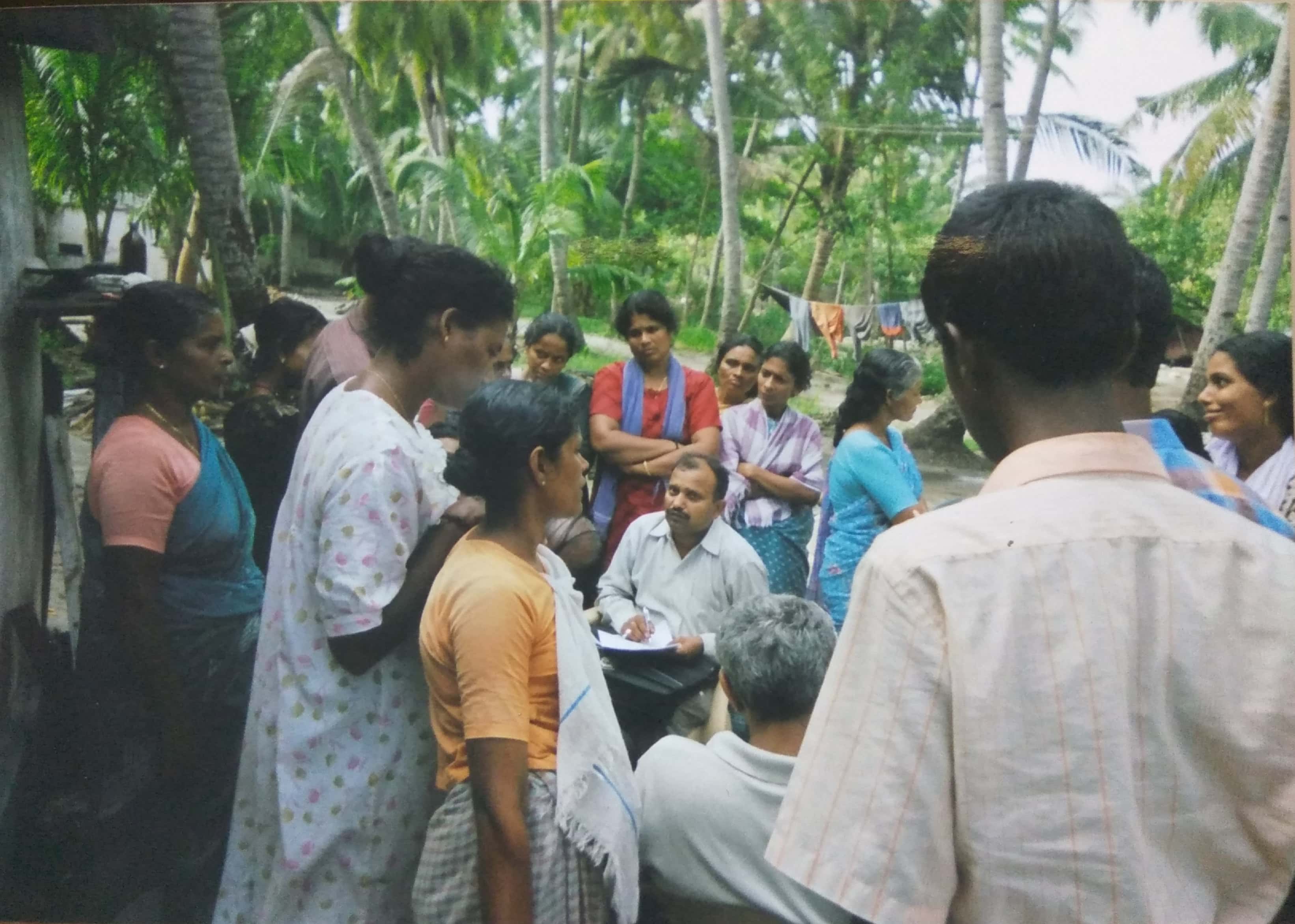 animals during these disasters, thus not only preventing their suffering but also helping protect the livelihoods of the people who depend on them. Animal protection starts with people, so it is essential to arm animal owners and communities in vulnerable regions with specialised training so that they are ready and able to protect their animals in an emergency. Appreciably, some agencies in India are now conducting emergency disaster drills for preparing communities to protect animal lives, and thereby local livelihoods
animals during these disasters, thus not only preventing their suffering but also helping protect the livelihoods of the people who depend on them. Animal protection starts with people, so it is essential to arm animal owners and communities in vulnerable regions with specialised training so that they are ready and able to protect their animals in an emergency. Appreciably, some agencies in India are now conducting emergency disaster drills for preparing communities to protect animal lives, and thereby local livelihoods
LESSONS
Lessons from these disasters demonstrate that national governments, aid agencies, and international/non-governmental organizations (I/NGOs) are effective primarily at distributing short-term products (e.g., food packages and tarpaulin) to cities (Chapagain and Raizada 2017). Such products are inexpensive, simple to procure, and easily quantifiable for donors. Unfortunately, the literature suggests that many national governments and foreign NGOs are ineffective at assisting rural farmers in both the short- and long-term. Given that the global community is somewhat effective at distributing short-term products, Chapagain and Raizada (2017) have suggested that a similar strategy should be developed for rural areas, but focusing on products that can assist farm households.
To minimise the gap in knowledge of effective products that can target such households after a disaster, they proposed an emergency sustainable agriculture kit (eSAK) framework for disaster relief in rural areas. The eSAK involves a comprehensive list of products that can be combined into packages to address the needs of shelter, hunger, first aid, seeds, preservation of indigenous crop varieties, and post-disaster labour shortages. The EAS can work out strategies elucidating their roles in different types of disasters and emergencies, which will not only help reduce the stress and sufferings of farmers but also improve the visibility of the profession in the eyes of the public at large.
LIVESTOCK DISASTER MANAGEMENT: SOME KEY INITIATIVES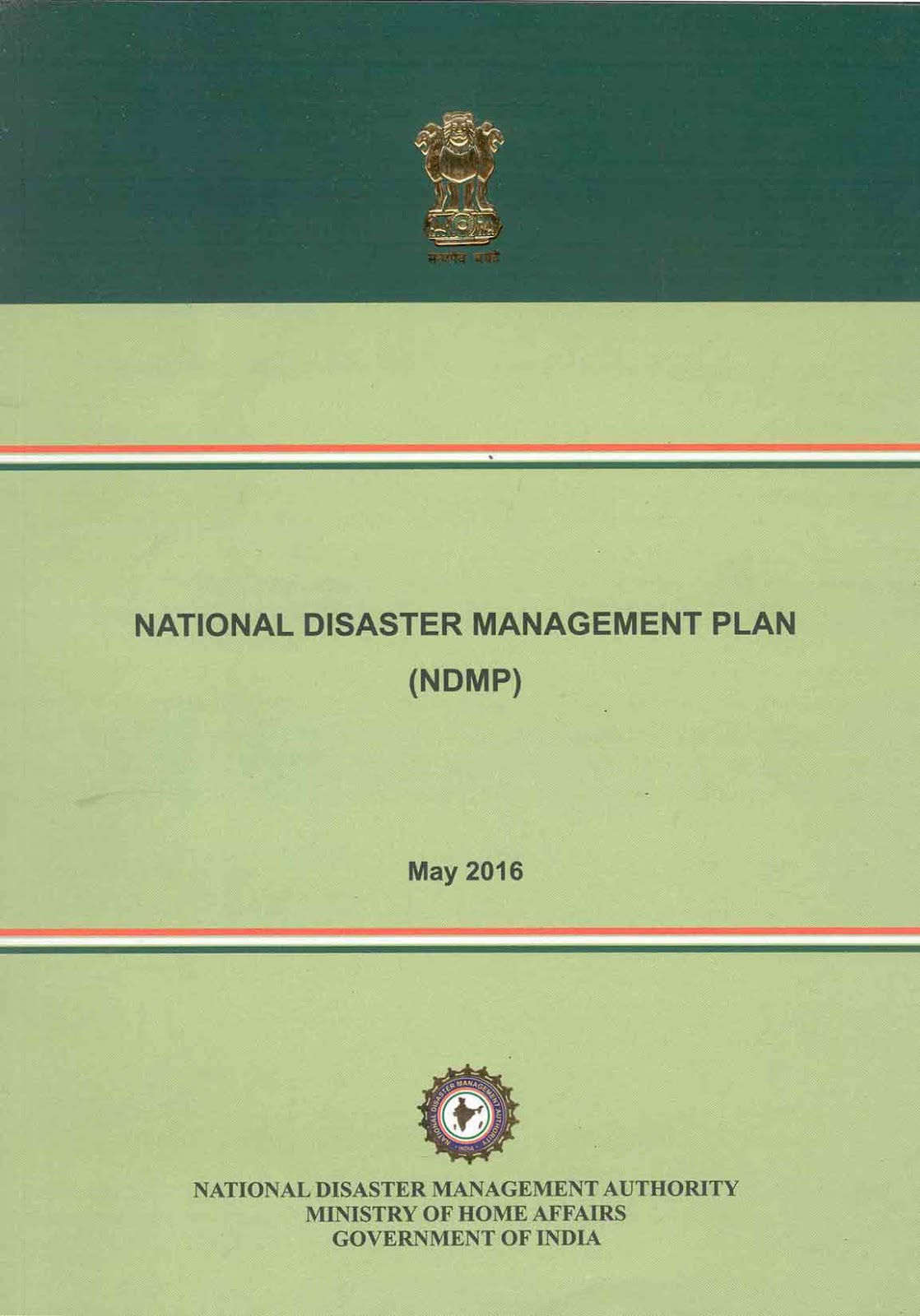
On 3 March 2016, the National Institute of Disaster Management (NIDM), World Animal Protection and Policy Perspectives Foundation (PPF) together with Department of Animal Husbandry, Dairying & Fisheries (DADF), Ministry of Agriculture & Farmers Welfare, Government of India,reached the landmark of integrating animals into the National Disaster Management Plan of India . The plan ensures, for the first time, that animals will be included in disaster preparations, potentially saving millions of animal lives and building the resilience of the communities that depend on them. With the launch of the National Disaster Management Plan 2016 , India has also aligned its National Plan with the Sendai Framework for Disaster Risk Reduction 2015-2030 , of which India is a signatory.
DISASTERS: WHAT EAS COULD DO?
To discuss issues of development in the area of disaster management in agriculture, the National Academy of Agricultural Sciences (NAAS), India, organized a one-day brain-storming session on 27 February, 2004. The role of the Government of India, International agencies, Non-governmental organisations, Panchayati Raj institutions including those in education and training within disaster management, were deliberated upon (NAAS 2004). A number of recommendations emerged at this session, some of these have been studied since then. The role of disaster management education and training was emphasized in planning and implementation of disaster management strategies. The workshop recommended that education should be designed so as to provide comprehensive knowledge on different types of hazards, disaster management techniques, and impediments in the way of disaster reduction, and should directly address community needs.
Often response to disasters is addressed by the local and state development administration, including designated disaster management authorities. But this does not mean other organizations have no responsibility or can’t do anything in disaster situations. Extension is one among a few other organizations that is well positioned to assist affected communities with long-term disaster recovery. Recovery programming falls well within Extension’s wheel house; it can provide swift response to local needs with research-based educational outreach and direct engagement, often accomplished through synergistic work with community partners. Extension’s engagement in disaster preparedness and recovery benefits communities because no other entity has the geographic distribution, access to research-based practices, local credibility, capacity, and mission to address the depth and breadth of community needs after such events. Additionally, the goodwill and relationships forged during such trials can go on to facilitate extension programming in an area long after recovery is complete (Kerr, Sanders, Moulton & Gafney 2018).
Given that it is embedded in communities, and has programming visibility, along with existing partnerships, Extension can be a valued, trusted, and effective participant in community-based recovery efforts. In the time of a disaster, a state’s Extension Service has the opportunity to be a local beacon of recovery while working side-by-side with others in the community. Serving in this way helps Extension Service grow stronger (Boteler 2007; Cathey, Coreil, Schexnayder & White 2007). Moreover, citizens trust Extension as a credible source of locally relevant information and appreciate Extension’s effective connections with other organizations (Eighmy, Hall, Sahr, Gebeke, & Hvidsten 2012). As trusted members of the communities they serve, Extension professionals are strongly positioned to share mitigation and adaptation strategies with their clients (Prokopy et al. 2015).The major strengths of Extension are the dedicated Extension personnel and the Extension model that includes partnerships, state-wide networks of offices, and a unique focus on assessing human and community needs (Cathey, Coreil, Schexnayder & White 2007). Extension staff may consider becoming members of the local emergency preparedness teams and work toward establishing Extension as a valuable resource before, during, and after a disaster (Washburn 2006).
Considering the importance of disaster management, one compulsory non-credit course entitled ‘Disaster Management’ was introduced in 2009 by ICAR at the Master’s level of agricultural education in Indian universities. This course aims to: introduce learners to the key concepts and practices of natural disaster management; equip them to conduct a thorough assessment of hazards, and risks vulnerability; and build capacity to deal with disasters. Many would argue that such courses are important not only in agriculture but across all disciplines so that all citizens are ready to face, or assist others, as and when required. In Veterinary Education too, such a course would help develop capacities of veterinarians to handle emergencies better.
EAS can join disaster management agencies to contribute in:
-
- understanding disaster risk, enhancing disaster preparedness for effective response and to ‘Build Back Better’ in recovery, rehabilitation and reconstruction, and strengthening disaster risk governance to manage disaster risk better;
- training and education on disaster risk reduction, including the use of existing training and education mechanisms and peer learning;
- promoting the incorporation of disaster risk knowledge, including disaster prevention, mitigation, preparedness, response, recovery and rehabilitation, into formal and non-formal education, as well as in professional education and training;
- promoting national strategies to strengthen public education and awareness in disaster risk reduction, including disaster risk information and knowledge, through campaigns, social media and community mobilization, taking into account specific audiences and their needs;
- enhancing collaboration among people at the local level to disseminate disaster risk information through the involvement of community-based organizations and non-governmental organizations.
Disaster Management Team heading to Vandal village, Nagapattinam district, Tamil Nadu
The EAS can disseminate tailored climate forecasts prepared by meteorological agencies to support farmers’ seasonal needs through mobile phones, information centres, community radio, etc., and thus help farmers protect themselves from climate shocks and changes. These advisories, however, have to be context specific and relevant to local situations since generalized messages often prove to be wrong, leading to lack of confidence in them by farmers. RAS can also motivate farmers by enabling them to buy index-based insurance giving them a measure of protection in the event of extreme weather. In this new paradigm, insurance pay-outs are pegged to easily-measured environmental conditions, or an ‘index’, that is closely related to agricultural production losses. Possible indices include rainfall, yields, or vegetation levels measured by satellites. When an index exceeds a certain threshold, farmers receive a fast, efficient pay-out, in some cases delivered via mobile phones.
In recent times, the instances of social media use in emergency situations, such as disasters, are increasingly being noticed (Box 3). Social media can act as one potential disaster management tool. A social media platform, such as Twitter, combines human efforts and machine computation to process highly accurate tags and labels for subsets of micro tweets. It coordinates the role of humans and smart-technology to work together and improve disaster response efforts (Anbalagan and Valliyammai 2016).
Extension functionaries should have knowledge and skills on the subject of social media and its uses, including the current tools, methods, and models to properly make use of social media for crisis communication. Extensionists need to be equipped with capacities on the use of social media tools, such as Facebook, WhatsApp, Twitter, Youtube, etc. They need to learn and master skills to disseminate information and monitor, track, measure, and analyse social media traffic. Extensionists should be able to use social media as a method to identify warning signs when a crisis is developing, so that they can communicate with stakeholders on handling disasters. Livestock owners may need advisories of various kinds related to feeding, housing and health of their livestock. Creation of awareness for disaster reduction is a felt need for improving preparedness among communities. A good communication network is required to keep all the agencies involved in a state of preparedness in order to manage the disaster as efficiently as possible (Gnanasekaran 2018). In recent times, Whats App has become very popular among farmers to share information on farming practices (Chander 2016), which could be even more useful during natural calamities.
We can look for successful initiatives taken around the world, where extension personnel are well integrated with disaster management efforts. Extension has gained ground in helping communities prepare and recover from disasters in the USA.For instance, the Extension Disaster Education Network (EDEN), created in 1994, is a collaborative multi-state effort by Extension Services across the USA to help extension personnel facilitate preparedness and response services for citizens. Land-grant institutions across the United States and its territories are members of this organization, with each institution appointing EDEN representatives. The EDEN website serves as a disaster-related resources portal for extension personnel to share with their clientele to help them prepare for, and stay safe during, and then recover from disasters. Several disaster-related educational programs are available through EDEN.
One example is the Family Preparedness training, a classroom program developed to teach families and individuals how to make family disaster kits, develop a family disaster plan, and be informed about and prepared for various disasters. These resources should be used to help organizations and government fill some of the family- and child-oriented gaps in state and local disaster plans (Black 2012). EDEN has opened the door for extension personnel to work in the emergency management field, since extension through the resources available from EDEN can serve their stakeholders in times of need (Koch 1999). The Extension Disaster Education Network links land-grant institutions with disaster management. The efforts of EDEN representatives have provided the necessary ‘foot in the door’ attribute needed to work in the field and it serves as a portal for disaster-focused resources.
END NOTE
To sum up, Extension’s engagement with disaster management efforts can effectively contribute by:
- Increasing literacy among extension professionals in every sector on potential regional impacts and adaptation strategies with regard to climate change. This is key to producing high-quality relevant programs for addressing climate-related risks. Given the urgency of addressing climate-related issues and the range of climate-related perspectives among extension professionals, thoughtfully designing programs to build climate literacy across and within climate-perspective groups are a critical path forward (Clifford& Monroe 2018). EAS need to develop capacities so that extension professionals can assist effectively in all stages of disaster management, viz., preparedness, response, recovery, and mitigation. EAS can promote disaster resilient practices among farmers, facilitate rural / local agriculture innovation systems to mitigate disaster, and educate farmers on standard operating procedures (SOPs) to get post-disaster relief services and in-kind materials. EAS can also scout around for relief materials, aid and other contributions, through corporate social responsibility (CSR). To revive human and livestock habitats, health and agriculture, EAS can train and facilitate the people – involving faculties, scientists including students of agricultural research and academic institutions, and other stakeholder institutions
- EAS could be of great help in disseminating correct information about safe places, rescue operations, ways to safeguard people and animals, first-aid methods, and in-kind relief material distribution places, through authorized institutions using personal communication, public address system, mass media, social media, flyers, and other appropriate mass media to people. Also, developing simple extension literature, such as ‘Do’s & Don’ts’ during disasters could be a big help to affected communities
- Extension is uniquely positioned to assist with community disaster preparedness, mitigation, and response efforts; so this needs to be outlined in the National Preparedness Goal. We need to document examples of Extension’s involvement in disaster management and its contributions in the many aspects of community emergency preparedness
References
Anbalagan Bhuvaneswari and Valliyammai C.2016.#ChennaiFloods: Leveraging human and machine learning for crisis mapping during disasters using social media. In: Proceedings of IEEE 23rd International Conference on High Performance Computing Workshops. IEEE Computer Society2016. https://www.computer.org/csdl/proceedings/hipcw/2016/5773/00/07837049.pdf
Bara Sunita, Shilpi Priya and Ganguli Debasis.2016. Effect of natural disaster on livestock farmers: The case of cyclone ‘Phailin’ in Odisha. In: Proceedings of the International Conference on Agriculture, Food Science, Natural Resource Management and Environmental Dynamics: The Technology, People and Sustainable Development.Bidhan Chandra Krishi Viswavidyalaya, Mohanpur, Nadia, West Bengal, India; and KrishiSanskriti, New Delhi, India.13-14 August 2016. http://www.krishisanskriti.org/vol_image/11Dec201607125888%20%20%20%20%20%20%20%20%20Debasis%20Ganguli%20%20%20%20%20%20%20%20105-108.pdf
Benson Charlotte.2016. Promoting sustainable development through disaster risk management. ADB Sustainable Development Working Paper Series No 41, March. Mandaluyong City, Philippines:Asian Development Bank.
Black Lynette.2012. Disaster preparedness and the Cooperative Extension Service. Journal of Extension50(3), Article 3COM1. Available at: https://joe.org/joe/2012june/comm1.php
Boteler F. 2007. Building disaster-resilient families, communities, and businesses. Journal of Extension45(6), Article 6FEA1. Available at: http://www.joe.org/joe/2007december/a1.php
Cathey L, Coreil P, Schexnayder M, andWhite R. 2007. True colors shining through: Cooperative Extension strengths in time of disaster. Journal of Extension, 45(6), Article 6COM1. Available at: http://www.joe.org/joe/2007december/comm1.php
Chander Mahesh. 2016. WhatsApp in agriculture? The GFAR Blog, July14. https://blog.gfar.net/2016/07/14/whatsapp-in-agriculture/
Chapagain Tand Raizada MN. 2017. Impacts of natural disasters on smallholder farmers: gaps and recommendations. Agriculture & Food Security 6: 39. https://agricultureandfoodsecurity.biomedcentral.com/articles/10.1186/s40066-017-0116-6
Clifford Maggie and Monroe Martha. 2018. Improving climate literacy within Extension by understanding diverse climate-related informational needs. Journal of Extension. 56 (7), Article 7FEA1.
Eighmy M, Hall T, Sahr E, Gebeke DandHvidsten M. 2012. The Extension Service and rural/frontier disaster planning, response, and recovery. Journal of Extension50(4), Article 4FEA10. Available at: http://www.joe.org/joe/2012august/a10.php
FAO.2015. The impact of disasters on agriculture and food security. The Report.Rome: FAO.http://www.fao.org/3/a-i5128e.pdf
FAO.2018. Disaster risk reduction in agriculture. Policy Support and Governance. Rome: FAO.http://www.fao.org/policy-support/policy-themes/disaster-risk-reduction-agriculture/en/
FAO, IFAD, UNICEF, WFP and WHO. 2018. The State of Food Security and Nutrition in the World 2018. Building climate resilience for food security and nutrition. Rome, FAO. http://www.fao.org/3/I9553EN/i9553en.pdf#page=84
Ganguli Debasis.2004. Effect of Orissa supercyclone on livestock farming: An ex post facto study. PhD thesis. Indian Veterinary Research Institute, Izatnagar, Bareilly, UP.
Ganguli Debasis and Chander Mahesh.2007. Impact of natural disasters on livestock farmers: The case of Orissa supercyclone of 1999 in India. Indian Journal of Animal Sciences 77(6):504-508.
Gnanasekaran A. 2018. Experience of the Department of Animal Husbandry and Veterinary Services in Tamil Nadu in management of natural disasters. In: Proceedings of International Symposium on Animals in Disaster, 26-27 September, TANUVAS, Chennai. Veterinary Emergency Response Unit (VEERU), TANUVAS.
GOI. 2016. Compendium of environment statistics India. Ministry of Statistics & Programme Implementation, Central Statistics Office, Social Statistics Division, New Delhi. Available at http://www.indiaenvironmentportal.org.in/files/file/compendium%20of%20environment%20statistics%202016.pdf
Kerr Susan, Sanders Kristina, Moulton Curtis and Gaffney Michael. 2018. The role of Extension in a university’s response to a natural disaster. Journal of Extension 56(4), Article 4FEA5. Available at https://joe.org/joe/2018august/a5.php
Kumar R. 2018. 46,000 cows among 1.8 cr livestock die in Kerala flood. The Pioneer (Dated 06 September 2018). https://www.dailypioneer.com/2018/page1/46-000-cows-among-1-8-cr-livestock-die-in-kerala-flood.html
NAAS (National Academy of Agricultural Sciences, India).2004. Disaster management in agriculture. Policy Paper 27. New Delhi: National Academy of Agricultural Sciences.
Naidu Prasant.2014. This is how Andhra Pradesh CM is using technology &social media to rebuild cyclone Hudhudhit areas. Lighthouse Insights, 16 October. http://lighthouseinsights.in/vizag-cyclone-hudhud.html/
Pradnya. 2015. Chennai floods &social media as a disaster management tool. Digital Vidya, 17 December.https://www.digitalvidya.com/blog/how-social-media-helped-during-chennai-floods-as-a-disaster-management-tool/
Prokopy LS, Carlton JS, Arbuckle JG, Haigh T,Lemos MC, Mase AS and Power R. 2015. Extension’s role in disseminating information about climate change to agricultural stakeholders in the United States. Climatic Change, 130(2):261–272. doi:10.1007/s10584-015-1339-9
Sen A and Chander Mahesh.2003. Disaster management in India. The case of livestock and poultry. Rev.Sci.Tech.Off. Int. Epiz 22(3):915-930.
UNISDR (United Nations International Strategy for Disaster Reduction and Recovery).2008. Linking disaster risk reduction and poverty reduction: good practices and lessons learned.Geneva: UNISDR Secretariat. http://www.unisdr.org/we/inform/publications/3293
Washburn C. 2006. Extension’s role in homeland security: A case study of Washington County, Utah. Journal of Extension 44(6). Article 6COM1. Available at:https://www.joe.org/joe/2006december/comm1.php
WHO (World Health Organization). 2007. Risk reduction and emergency preparedness. WHO six-year strategy for the health sector and community capacity development. Geneva, Switzerland. https://www.who.int/hac/techguidance/preparedness/emergency_preparedness_eng.pdf
D r Mahesh Chanderis Principal Scientist & Head, Division of Extension Education at ICAR- Indian Veterinary Research Institute, Izatnagar243 122 (UP), India. Email: drmahesh.chander@gmail.com
r Mahesh Chanderis Principal Scientist & Head, Division of Extension Education at ICAR- Indian Veterinary Research Institute, Izatnagar243 122 (UP), India. Email: drmahesh.chander@gmail.com
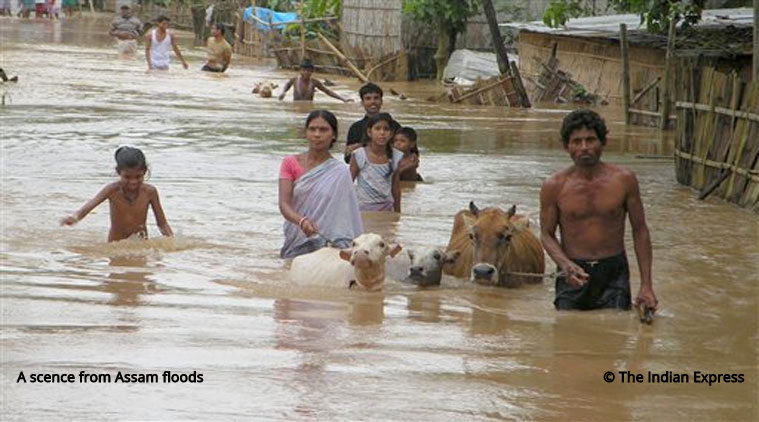

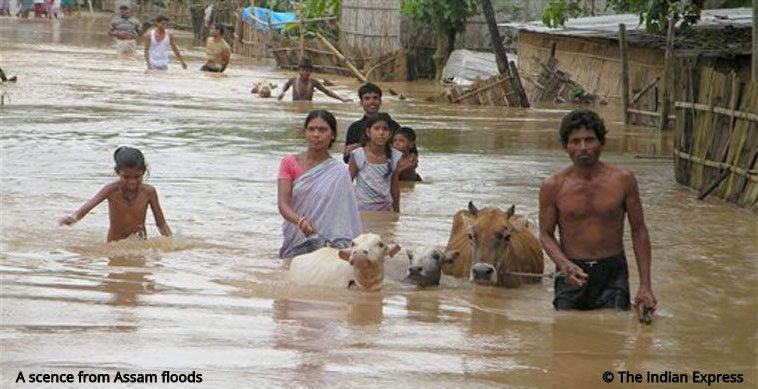
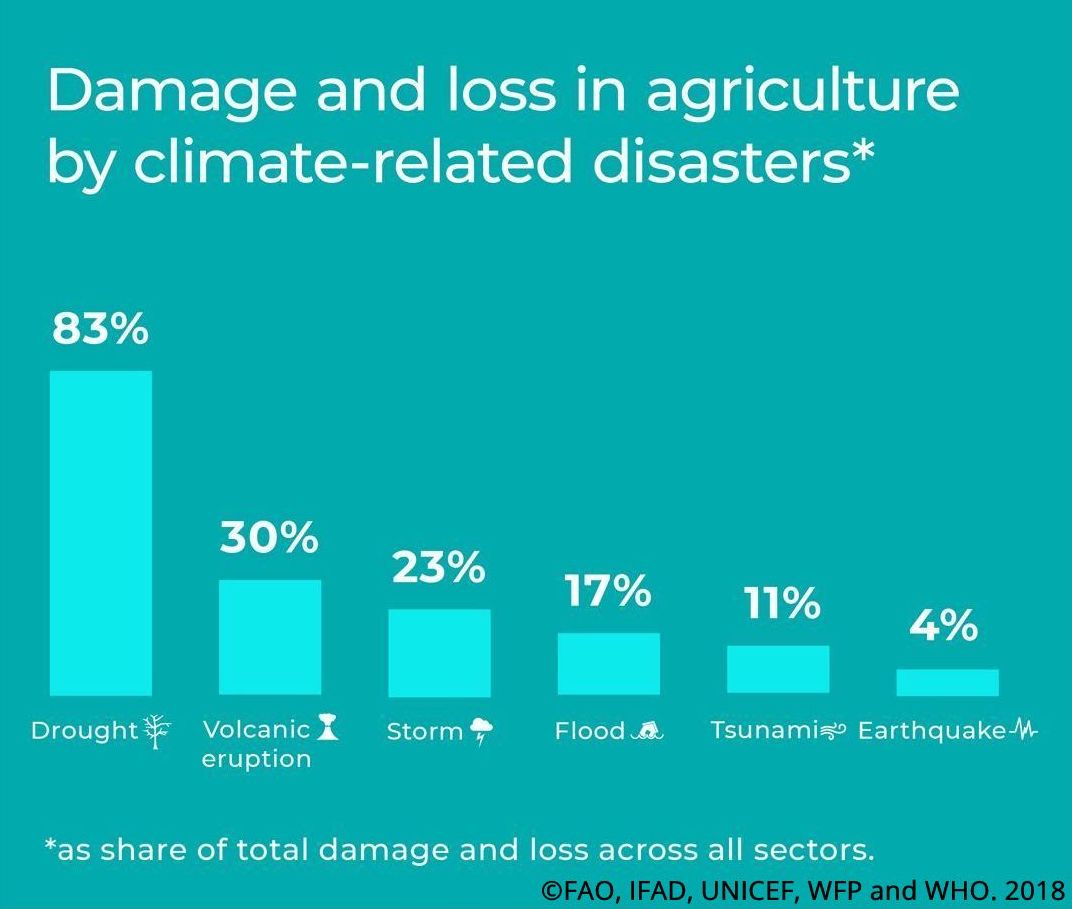
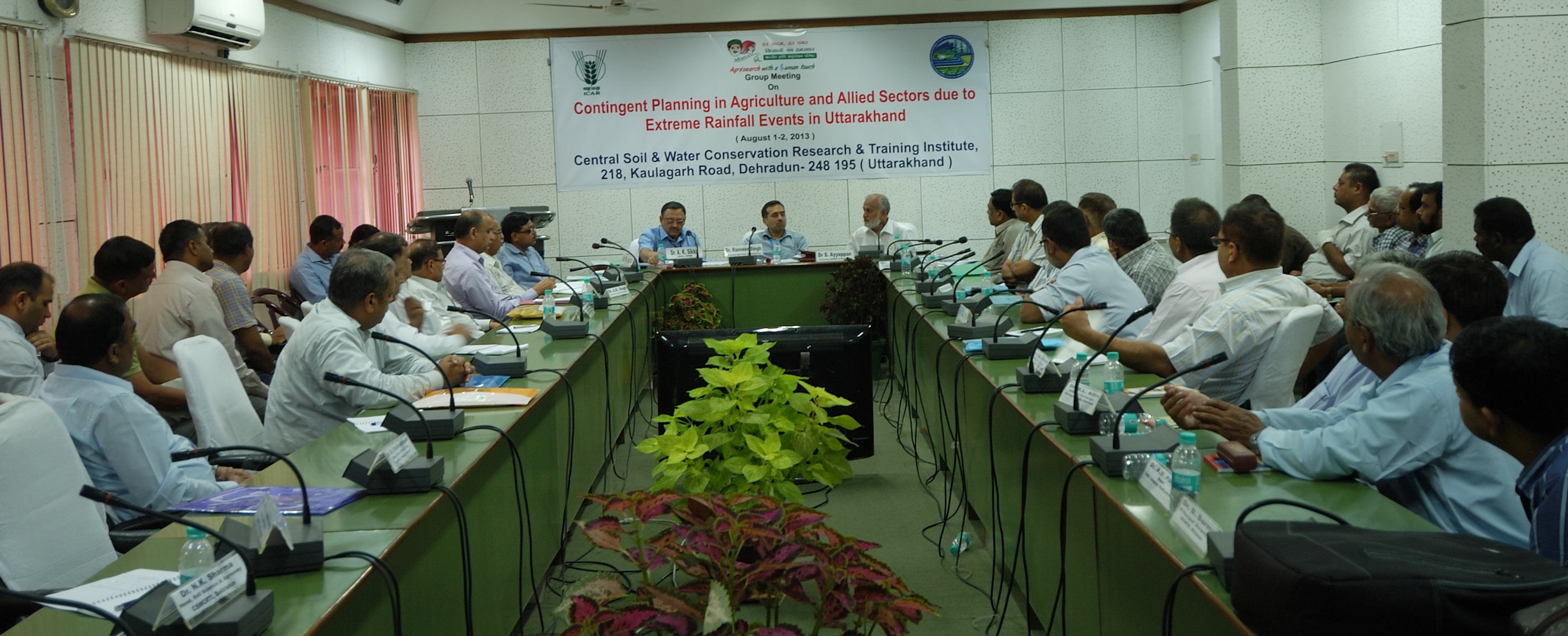
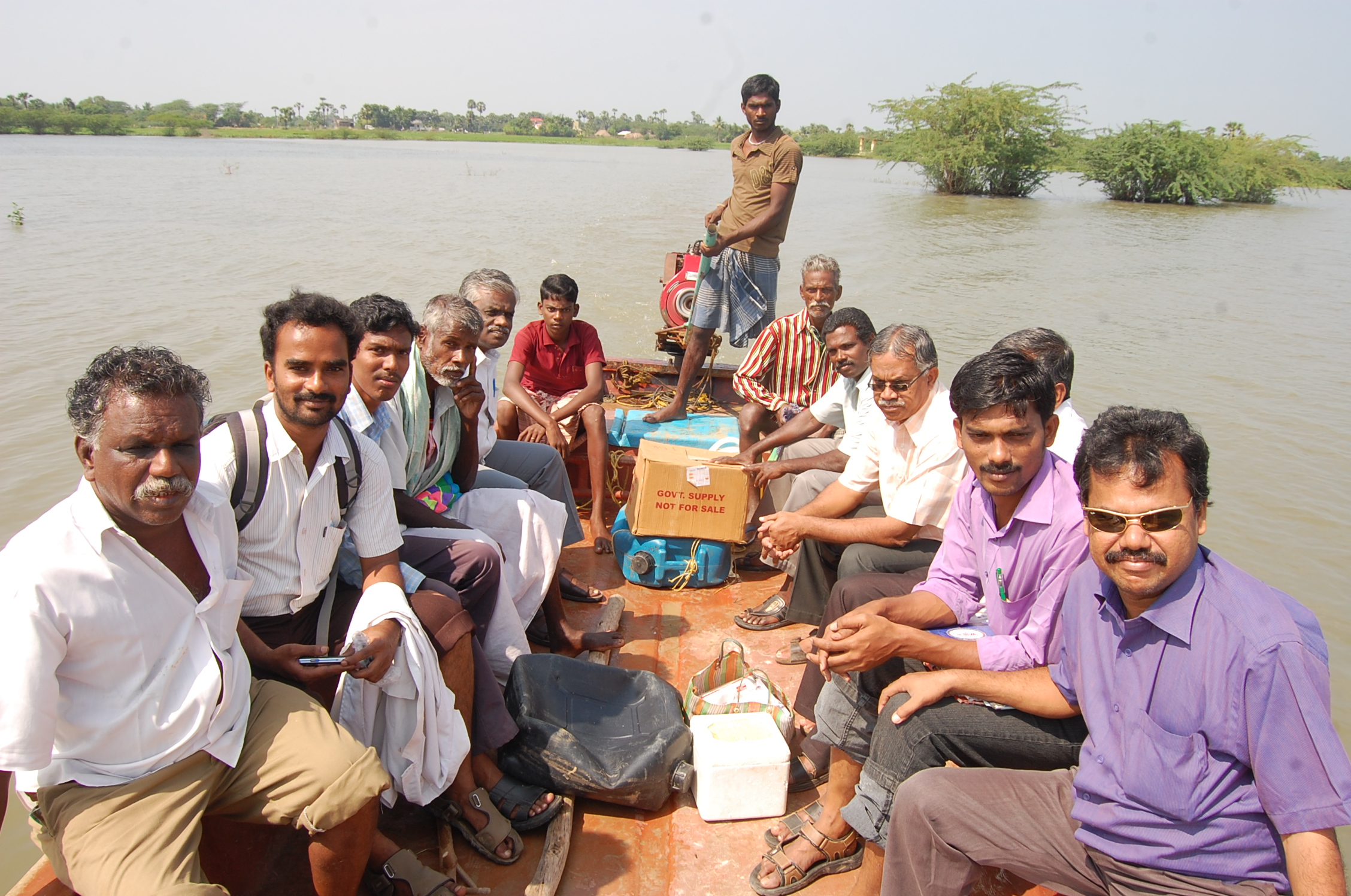

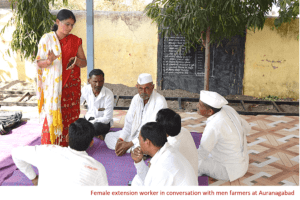
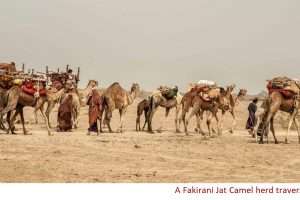
“Thanks for sharing a wonderful piece by Mahesh ji. Very comprehensive and informative indeed. Role of EAS is very well spelt out. Besides, awareness and training measures, perhaps what is required is taking up a few pilots by the lead institutes in collaboration with NDMA and international partners and demonstrate the resilient measures and interventions on the ground. Drought being the major factor affecting farm sector, contingency plans would need to be in place in advance in vulnerable agro situations, action very well falls on the States/IMD/MOA etc”
Thanks very much. It is very relevant to our student’s research”